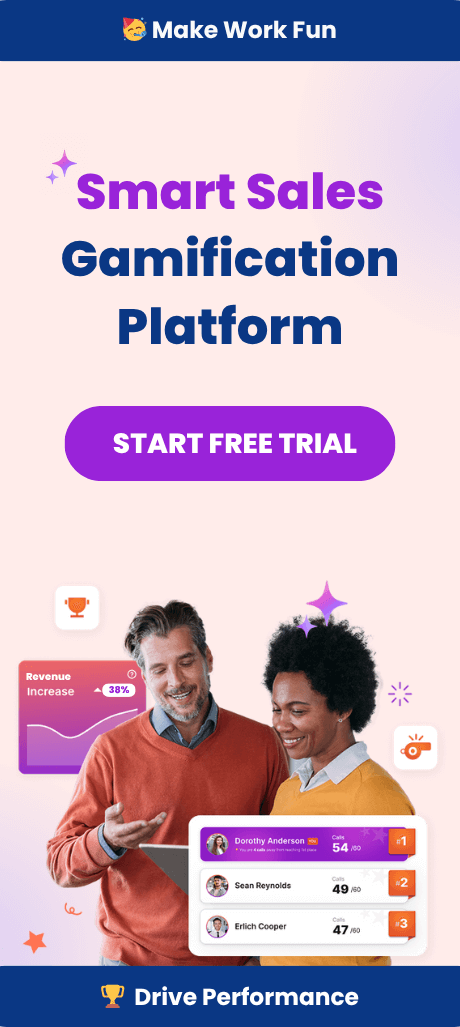Rethinking Sales Leaderboards
In today’s rapidly shifting sales landscape, leaderboards have evolved beyond a simple tally of numbers. They have become digital tools that actively foster motivation, healthy competition, and engagement among even the most seasoned sales professionals. The question is not whether leaderboards belong in the modern sales environment, but rather how they must adapt to maximize effectiveness for distributed, ambitious, and data-driven teams.
The Evolution of Sales Leaderboards
Sales leaderboards have a storied history. For decades, office walls, whiteboards, and cubicles showcased sales figures and top performers. These displays spotlighted achievement, creating a visible celebration of excellence. However, as remote work, hybrid teams, and data-rich sales platforms became the norm, static displays no longer captured the complexity or dynamism of today’s organizations. Digital sales leaderboards—updated in real-time and accessible from anywhere—have become central to recognition and motivation strategies. The value now resides not just in ranking, but in enabling transparency, inclusivity, and relevance for diverse teams.
Why Digital Leaderboards Motivate Modern Teams
There is a foundational need in all high-performing sales cultures: to recognize achievement, foster ambition, and clarify goals. Digital leaderboards provide these psychological motivators in real time. The drive to outperform peers and see one’s progress visualized is a powerful force, especially for results-driven professionals. Yet, not every leaderboard implementation delivers on this promise. Done thoughtfully, sales leaderboards do more than rank performance. They add multiple layers of value:
- Visibility: Sales teams, regardless of location, can see progress as it happens—not just at the end of a quarter or month.
- Inclusivity: Recognition becomes democratized. Not only top performers receive validation; new categories like ‘Most Improved’ or ‘Customer Champion’ create new avenues for motivation.
- Transparency: By integrating with CRM and sales tracking systems, achievements are verified and real—not subject to guesswork or outdated reporting.
By expanding beyond a single metric, digital leaderboards help managers celebrate varied strengths and catalyze friendly competition. This is particularly crucial in an era where hybrid and remote setups risk disengagement.
For a foundational exploration on the current state of leaderboards, see Are Leaderboards Still Effective?.
The Technology Shaping Leaderboard Innovation
The digital transformation of leaderboards could not have arrived at a better time. Advances in sales leaderboard software—especially those focused on seamless integrations, user-friendly displays, and advanced analytics—have radically improved the experience for both frontline sales professionals and executive leadership. Contemporary solutions are distinguished by several vital features:
- Real-Time Updates: Performance is no longer tracked on a delay. Data syncs instantly from the CRM to vibrant displays or apps.
- Customizable Metrics: Managers can define which KPIs (such as new deals closed, calls made, or upsell rate) matter most, creating tailored contests or recognition tracks.
- Multi-Format Access: Dashboards available on TV screens, laptops, or mobile devices keep teams engaged wherever they work.
This modernization puts the power of recognition in everyone’s hands, not just those in the office. To see how companies leverage these platforms, read more in The Best Performance Dashboard for Teams: Boost Efficiency and Results.
Leaderboards and Performance: More Than Rankings
The enduring perception of leaderboards as cutthroat tools that only reward a fortunate few doesn’t match best-in-class implementations. Instead, digital leaderboards are most powerful when their architecture reflects a broader understanding of performance: they reward not just peak results but also effort, improvement, and behavior aligned with company strategy. Consider the diverse set of metrics high-performing companies now track:
- Leading Indicators: Activities such as pipeline creation, discovery calls, or demos booked signal early effort and consistency, making progress visible even before deal closure.
- Lagging Indicators: Closed-won revenue still matters greatly, but it’s one part of a nuanced picture.
- Behavioral Metrics: Recognizing collaboration, knowledge sharing, or exceptional customer experience builds a virtuous cycle within the team.
For strategies on tracking and rewarding progress at every stage, Why Traditional Sales KPIs Don’t Work Anymore (and What to Do Instead) provides actionable frameworks.
Inclusion and Fairness: Designing Leaderboards for All
Leaderboards work best when every team member feels they have a stake in the outcome. That means avoiding narrow definitions of success, which spotlight only quota-busters. Diverse sales organizations include prospectors, nurturers, and problem-solvers. Recognition must reflect that variety—otherwise, segments of the team will disengage. Modern sales leaderboard software offers configurability, allowing leaders to:
- Set up multiple categories, so everyone—from new hires to tenured account managers—sees a path to standing out
- Award points or badges for non-revenue milestones that drive long-term business
- Rotate contest types and focus points regularly, keeping motivation fresh and addressing evolving business priorities
By prioritizing inclusion, leaderboards become a source of engagement for all, rather than a handful of top producers. Platforms such as Spinify allow sales organizations to start a trial and see firsthand how flexible leaderboards can boost morale across an organization.
Data Integrity and Trust in Leaderboard Platforms
If leaderboards are to be trusted by teams and leadership, data integrity is non-negotiable. Inaccurate, delayed, or opaque updates erode belief in the system and can have a chilling effect on morale. The best sales leaderboard platforms leverage direct integrations with CRM and ERP solutions, syncing real-time KPIs straight from the source. This approach ensures accuracy and eliminates manual errors or disputes over results. At the executive level, this also enables greater alignment between sales operations and revenue reporting, ensuring that incentive programs and recognition have measurable business impact.
Psychological Drivers: Why Leaderboards Enhance Engagement
There is a deep connection between visibility, motivation, and performance. Research across behavioral psychology and business management consistently finds that the right level of public recognition—not just private reports—inspires more sustained effort, creativity, and resilience. In a high-trust, supportive environment, leaderboards trigger:
- Goal Orientation: Visual progress boosts commitment and makes near-term milestones more tangible.
- Accountability: Peer visibility helps drive self-regulation and a positive sense of competition.
- Belonging: When recognition celebrates collaborative wins alongside individual success, engagement deepens for the entire team.
For a practical view on the link between engagement and results, Understanding the Link Between Engagement and Performance offers a thorough overview.
Leaderboards in Action: Industry Examples
Real-world adoption of digital leaderboards illustrates their flexibility and relevance. In SaaS sales, leaderboards have evolved to incorporate not just raw sales volume, but also customer retention, expansion opportunities, and NPS feedback. In insurance and real estate, leaderboards offer performance snapshots segmented by region, customer type, or product line. What’s consistent across these industries are the benefits:
- Increased voluntary activity and initiative among reps
- Higher employee satisfaction as recognition becomes normalized, not exceptional
- Greater alignment between daily activity and strategic company objectives
As featured in platforms such as Spinify, organizations can see direct impact through measurable KPIs, gamified progress, and cross-team collaboration. To see what this looks like in practice, book a demo with Spinify and explore live implementations.
Leaderboard Software: Selecting the Right Solution
Choosing the right sales leaderboard software is not about bells and whistles, but rather about strategic fit. Executive teams must consider not only integration capabilities but also ease of use, reporting depth, data security, and adaptability. The most effective platforms:
- Integrate directly with Salesforce, HubSpot, and other sales management software
- Allow customization by KPI, metric, or contest type, supporting fresh motivational campaigns throughout the year
- Empower users with insightful dashboards, both for teams and individuals
- Enforce robust access control and auditing for data privacy and compliance
Given the complex environment of modern sales and the diversity of metrics, no single solution fits all. It is therefore vital to pilot leaderboard software aligned with core business goals before rolling out at scale.
Overcoming the Pitfalls: Avoiding Demotivation and Competition Fatigue
Leaderboards can be powerful but also present risks if implemented without care. Exclusively focusing on a narrow result metric or failing to rotate recognition types can lead to disengagement—or worse, undermine teamwork. To avoid these pitfalls, leaders must:
- Refresh leaderboard criteria on a regular cadence, highlighting new behaviors and successes
- Incorporate both short-term sprints and long-term recognition, balancing frequent wins with deeper celebration of sustained achievement
- Solicit regular team feedback on what motivates them and adapt leaderboard design accordingly
By treating leaderboards as living systems rather than static displays, organizations keep engagement—and results—consistently high.
Embedding Leaderboards in Broader Performance Strategy
Leaderboards alone are never enough. Their greatest impact comes when embedded within a comprehensive performance management strategy that includes coaching, continuous learning, and career development. For example, coaching managers can use leaderboard data to spot early performance shifts, while HR and enablement teams can tailor learning and reward programs to complement real-time dashboard insights. This integrated approach transforms leaderboards from a motivational add-on to a strategic driver of both individual and team goals.
The Future: AI and Customization in Leaderboards
The next frontier for sales leaderboards lies in AI-driven customization. Platforms are increasingly leveraging machine learning to analyze engagement patterns, suggest personalized challenges, and recommend recognition tailored to each team member’s unique motivators. By automating key aspects of contest management, AI sales leaderboard software equips leaders with predictive insights, ultimately making leaderboards more human, flexible, and fair.
As technology continues to refine our understanding of what drives high performance, digital leaderboards will move even further from static rankings to become living tools for engagement, growth, and satisfaction in modern sales organizations.



